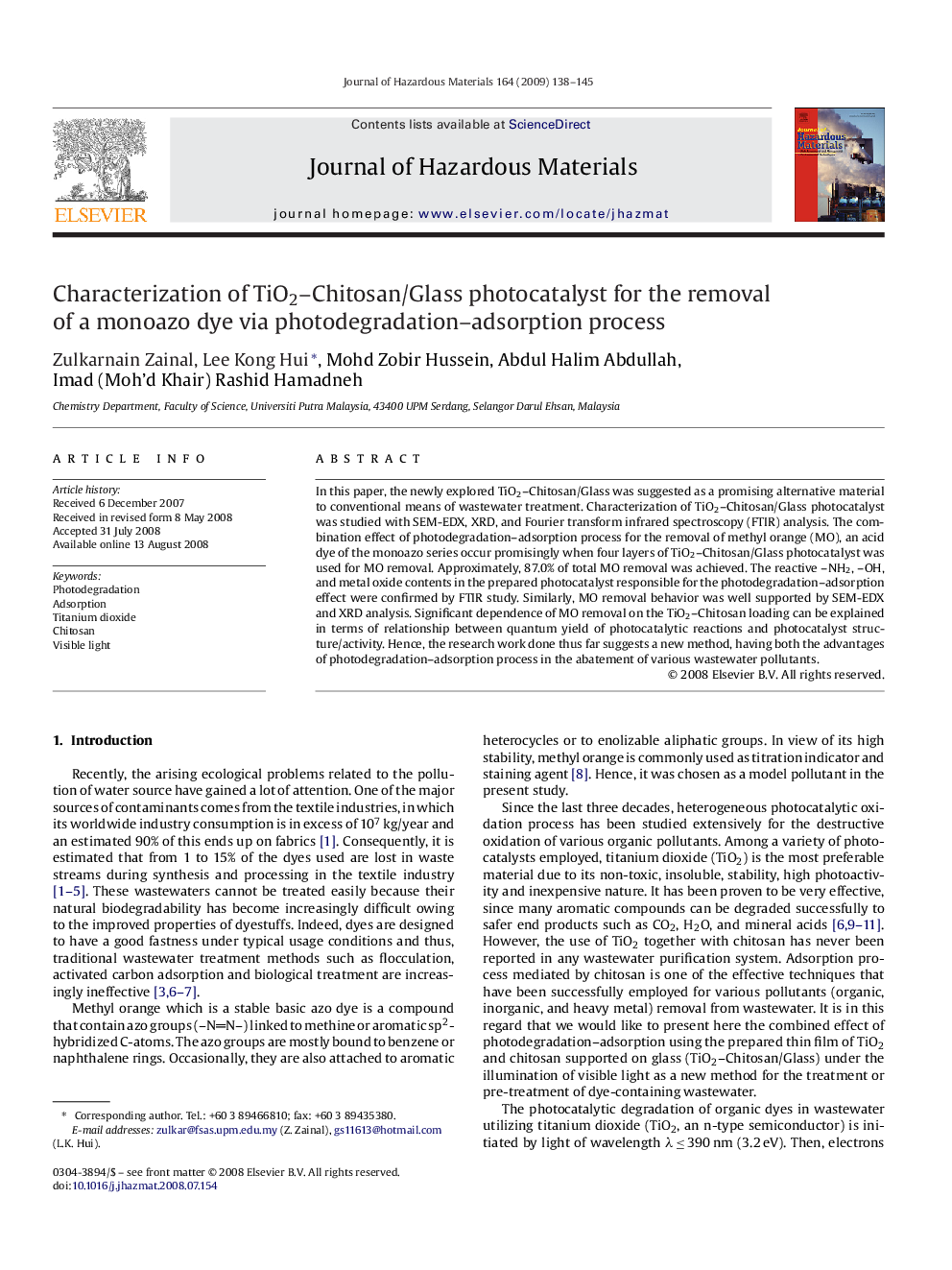| Article ID | Journal | Published Year | Pages | File Type |
|---|---|---|---|---|
| 582204 | Journal of Hazardous Materials | 2009 | 8 Pages |
Abstract
In this paper, the newly explored TiO2-Chitosan/Glass was suggested as a promising alternative material to conventional means of wastewater treatment. Characterization of TiO2-Chitosan/Glass photocatalyst was studied with SEM-EDX, XRD, and Fourier transform infrared spectroscopy (FTIR) analysis. The combination effect of photodegradation-adsorption process for the removal of methyl orange (MO), an acid dye of the monoazo series occur promisingly when four layers of TiO2-Chitosan/Glass photocatalyst was used for MO removal. Approximately, 87.0% of total MO removal was achieved. The reactive -NH2, -OH, and metal oxide contents in the prepared photocatalyst responsible for the photodegradation-adsorption effect were confirmed by FTIR study. Similarly, MO removal behavior was well supported by SEM-EDX and XRD analysis. Significant dependence of MO removal on the TiO2-Chitosan loading can be explained in terms of relationship between quantum yield of photocatalytic reactions and photocatalyst structure/activity. Hence, the research work done thus far suggests a new method, having both the advantages of photodegradation-adsorption process in the abatement of various wastewater pollutants.
Related Topics
Physical Sciences and Engineering
Chemical Engineering
Chemical Health and Safety
Authors
Zulkarnain Zainal, Lee Kong Hui, Mohd Zobir Hussein, Abdul Halim Abdullah, Imad (Moh'd Khair) Rashid Hamadneh,
